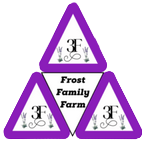Photo Credit: Douglas Shapero
Fiber Containers
Advantages
Fiber pots are by far the most eco-friendly because they are biodegradable. Fiber is an excellent alternative to other containers for users who want organic options. There are several variations of fiber pots, such as cardboard, paper, and different non-woven kinds. Some fibrous materials, like cardboard and paper, break down faster than others which can be planted directly into the ground. This process provides several benefits, such as making transplanting as easy as digging a hole and placing the fiber pot directly into the ground. Those that have transplanted understand the issues. The soil has to be dry enough to ensure the entire root system and soil stay intact to transfer into the ground. Yet, it cannot be too dry where it kills the starter plant. Another advantage is that the fiber pot will break down and provide the soil with nutrients to increase soil health. This is not an alternative to compost, but it benefits soil non the less. Check out our compost blog.
Non-woven Fabric
Non-woven fabric containers (as seen in the photo above) are perfect for indoor or outdoor use. It is porous like other fiber pots, increasing airflow, and is easy to move (as seen in the photo with the handles). If buying these for use, ensure that the handles are sewn on instead of being one solid piece with the pot. This will promote the longevity of the handles. Handles that are not sewn on will stretch, reducing their use over time.
Air Pruning
The non-woven fabric prevents plants from becoming root-bound. When a plant becomes root-bound, it eventually becomes strangled by its roots. It forms a circle until the roots can no longer grow. Fiber containers are an advantage to plant health. Plants can naturally grow because the roots penetrate the non-woven fabric, promoting natural root structures. Once they hit the open air, they die back (i.e., air pruning), so the roots are contained inside the pot. This does not hurt the health of the plant. In fact, it enables roots to continuously grow, promoting healthy root structures. Whether plants are intended to be planted in the ground or stay in pots, this method is excellent for plant health.
Plastic vs. Fiber
Plastic Containers
Plastic pots are more conventional than Fiber pots. Plastic pots are easily reusable and made from machines, so they are made in mass quantities and used by numerous small and large companies and businesses. In other words, they are in every garden or nursery store, so accessibility is high. However, there are costs to these methods. Plastics are tough to expose, and not all plastics can be recycled. Plastic can crack and break, which may expose the environment to plastic fragments (even microplastics). We at Frost Family Farm believe in working with nature to reduce plastics and other harmful environmental materials. Plastic containers have benefits like durability and storage (i.e., stackable) and are lightweight. They also retain water very well but are not porous like fiber pots. Water retention can be an advantage or disadvantage, depending on the plant and region.
Fiber Containers
Fiber pots are less durable than plastic containers. Due to their natural biodegradable nature, they lose their structures over time. Nonwoven stays intact more than other fiber varieties, but nothing compares to longevity like plastic pots. Fiber pots also need to be watered more frequently because of their airflow, and water particles slowly drain and evaporate from the porous fibers over time. This can be managed with a routine water schedule or by a self-sufficient water system on a timer. We prefer fiber containers due to their eco-friendly applications and other advantages. Fiber pots have advantages and disadvantages, but we hope this information helps solidify the positives over the negatives. We wish the user finds the container that best fits their needs.
Reference
Fiber containers: Molded fiber pots and planters: HC companies. The HC Companies. (2022, June 3). Retrieved February 28, 2023, from https://hc-companies.com/fiber-planting-containers-planters-plant-pots/

